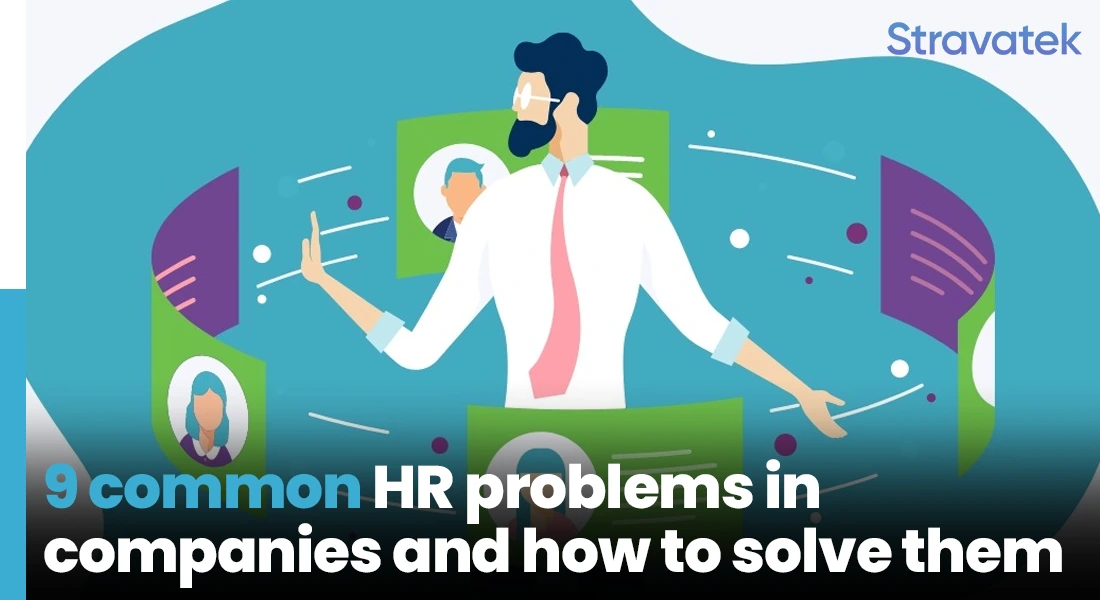9 Common HR Problems in Companies and How to Solve Them

Human Resources (HR) departments play a crucial role in managing a company’s workforce. As the business world evolves, HR faces increasingly complex challenges. These problems range from talent acquisition to managing a diverse or remote workforce. Understanding these issues and implementing effective solutions is vital for the success and sustainability of any organization. Visit: HR Expert.
What Can Be Categorized as HR Problems?
HR problems are issues that affect employee engagement, productivity, and satisfaction within a company. HR problems can severely impact businesses, including decreased employee morale, increased employee turnover, absenteeism, and a lack of trust in management. Additionally, HR problems can lead to reduced customer satisfaction and poor public relations. Here are nine common HR problems alongside their solutions to address them.

Problem #1: Attracting and Retaining Top Talent
Companies struggle to attract and keep skilled employees in a competitive job market. A high turnover rate leads to increased recruitment costs and decreased morale. The challenge is intensified by employees’ growing expectations regarding their work environment and benefits.
Solutions:
- Offer competitive salaries, job security, and a healthy work-life balance.
- Foster a positive corporate culture, provide growth opportunities, and flexible working arrangements.
- Regular team-building activities and clear communication can also enhance employee retention.
Problem #2: Respecting Inclusivity and Diversity
Undoubtedly, diversity in the workforce is crucial, but it can be challenging, as it encompasses a wide range of cultures, ages, genders, and ethnicities. Companies face difficulties in creating an environment where diverse perspectives are valued. Failure to address this can impact the company’s brand and employee satisfaction.
Solutions:
- Promote a respectful work environment that understands different cultures.
- Set clear DEI goals and sensitize employees about the importance of diversity.
- Implement team-building activities and policies that encourage inclusivity and equity.
Problem #3: Supporting Employee Mental Health and Wellbeing
Employee burnout due to high demands and stress negatively impacts mental health and company performance. Businesses often overlook the importance of emotional and physical wellbeing. This leads to reduced productivity and increased employee turnover.
Solutions:
- Prioritize health and wellness programs that encourage work-life balance.
- Implement flexible hours, encourage breaks, provide healthy options, and facilitate open discussions about mental health.
- Create a supportive environment that fosters employee wellbeing.
Problem #4: Managing and Engaging with Your Remote Workforce
The rise of remote work presents problems within an organization regarding maintaining team cohesion and productivity. Lack of face-to-face interaction can lead to misunderstandings and a disconnect with company culture. Training and engagement of remote employees are often inadequate.
Solutions:
- Schedule regular check-ins and use diverse communication channels.
- Develop a comprehensive remote work policy that respects individual schedules and promotes engagement.
- Encourage social interaction and clear communication among team members.
Problem #5: Onboarding Employees
Effective onboarding is critical for employee retention and performance, yet often undervalued. Poor onboarding experiences can lead to quick turnover and low employee engagement. Creating a positive first impression and integrating new hires into the company culture is challenging.
Solutions:
- Personalize the onboarding process and create a welcoming environment.
- Introduce new hires to the company’s goals, culture, and processes.
- Use company merchandise and mentorship programs to foster a sense of belonging and collaboration.
Problem #6: Giving Fulfilling Training Opportunities
The constant evolution of job requirements necessitates effective training programs. Inadequate or unengaging training leads to skill gaps and high turnover. Employees need continuous learning opportunities to stay relevant and engaged.
Solutions:
- Offer personalized training programs and budgets for professional development.
- Promote upskilling to meet evolving job requirements and encourage employee feedback on training effectiveness.
- Set clear goals to ensure continuous learning and development.
Problem #7: Offering Competitive Compensation and Benefits
Attracting top talent requires competitive compensation and benefits, a HR problem for many businesses, especially smaller ones. Economic instability and increasing costs make it hard to match the offerings of larger companies. Employees seek fair and motivating compensation packages.
Solutions:
- In addition to fair wages, offer flexible working conditions, development opportunities, and extra vacation days.
- Implement a rewards program and focus on equity in compensation across different demographics.
- Strive for a balance between financial and non-financial benefits.
Problem #8: Managing Employee Relationships
Poor employer-employee relationships lead to conflicts, low morale, and high turnover. Lack of leadership development and understanding of team dynamics exacerbates these personnel issues. Remote and hybrid work models add complexity to maintaining effective relationships.
Solutions:
- Encourage managers to engage in active listening and regular feedback.
- Build trust with employees by providing guidance on career paths and fostering open communication.
- Create a supportive environment that values employee input and resolves conflicts efficiently.
Problem #9: Embracing and Keeping Up with Change
One of the key challenges for human resource managers today include keeping up with the evolving business landscape. Companies struggle to adapt to rapid changes in technology, economy, and workforce dynamics. Resistance to change leads to outdated processes and disengaged employees. HR needs to measure and adapt its strategies to stay relevant.
Solutions:
- Embrace change with transparency and clear communication.
- Help employees understand their value and contribution to the company’s success.
- Establish metrics to measure HR effectiveness
- Adjust strategies accordingly to align with evolving business needs.
Conclusion
HR problems are diverse and evolving, but with strategic and thoughtful approaches, they can be effectively managed. By understanding these common issues and implementing appropriate solutions, HR departments can ensure a productive, satisfied, and engaged workforce, laying the foundation for a company’s success. Remember, each challenge is unique, and while a guide can simplify issues, it requires sensitivity and efficiency in handling each problem for a positive outcome. Visit: HR Services.
Navigating the complex landscape of HR problems can be daunting, especially for growing businesses. Stravatek offers a comprehensive solution to all your HR challenges. From attracting and retaining top talent to managing a diverse and remote workforce, our expert team is equipped to handle it all. Don’t let HR problems hinder your company’s success. Schedule a call with our HR Expert today and let our people become your people, ensuring your business thrives in today’s dynamic environment.
© 2021 Stravatek. All rights reserved.


